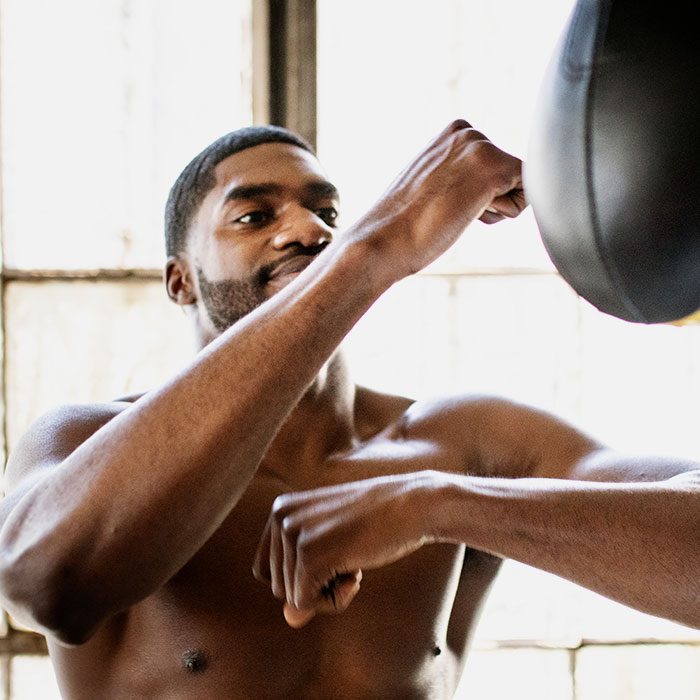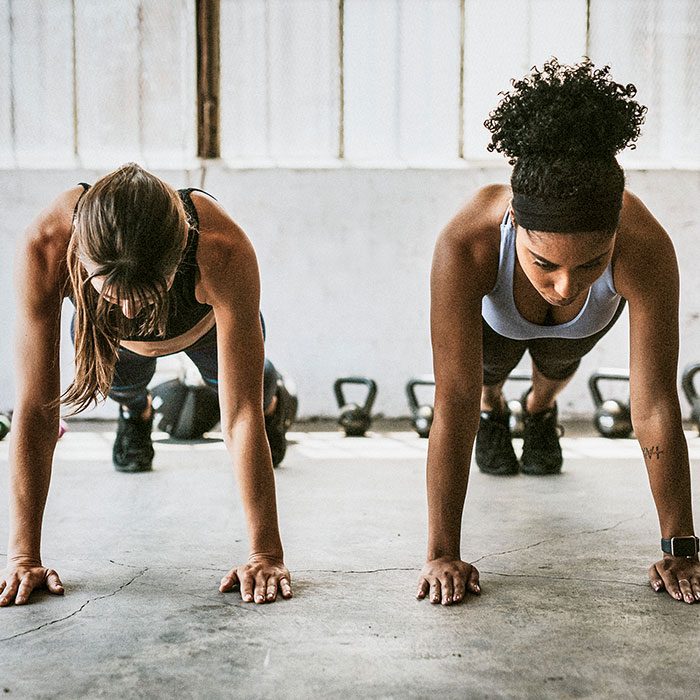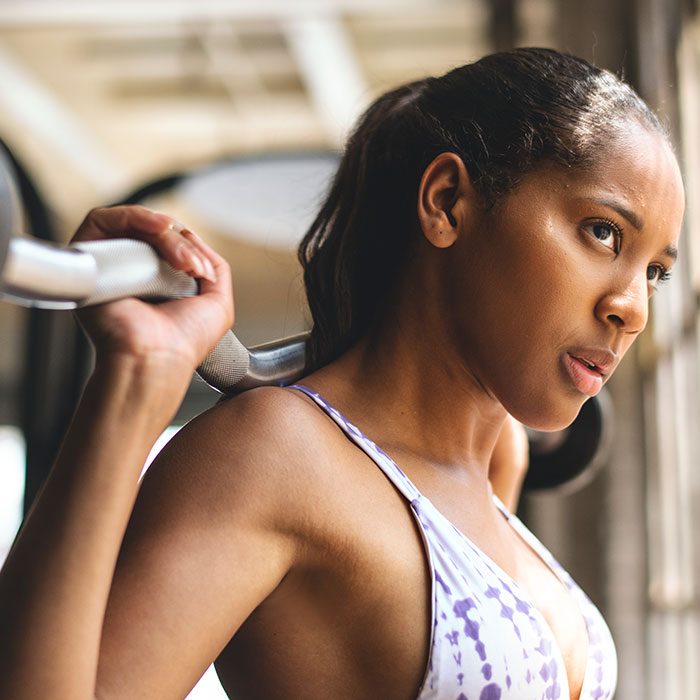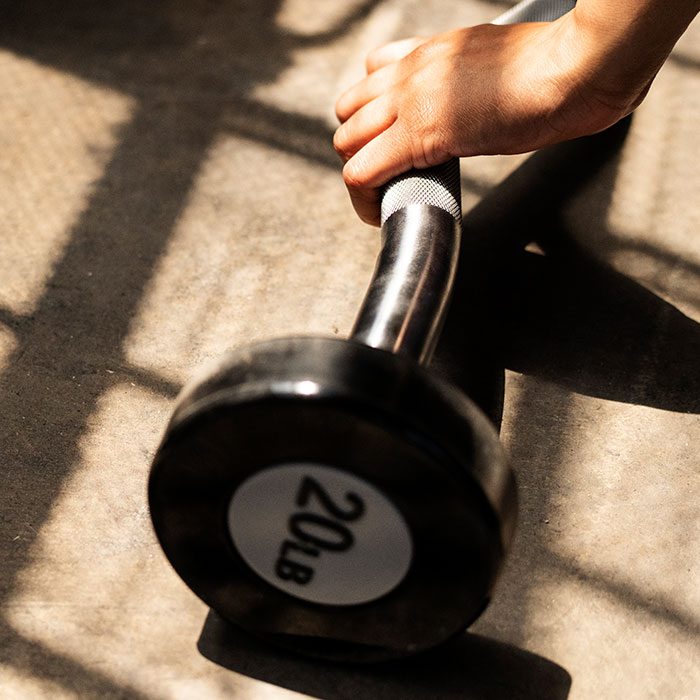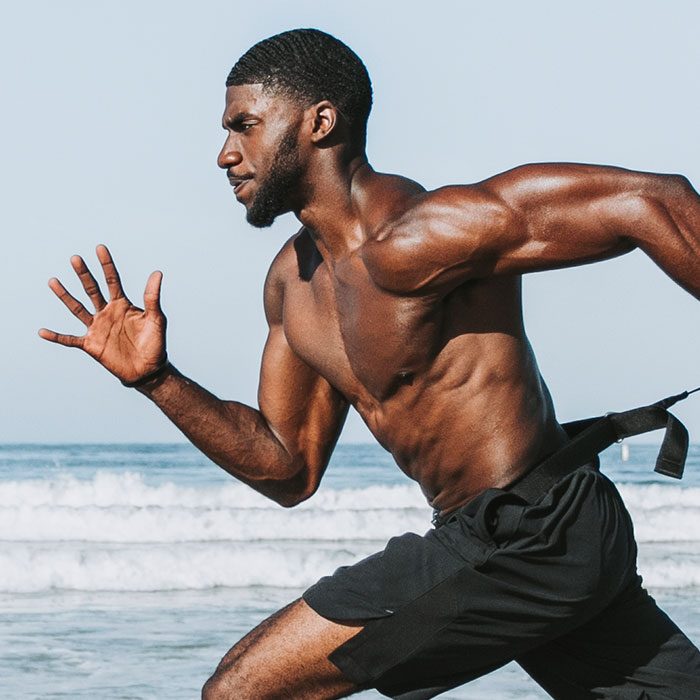How to Hold Football Grip – A Complete Guide
This blog post will cover everything that you need to know about how to properly hold the ball while playing football – from fundamentals of correct hand placement, finger positioning, and ball angle, all the way up to more complex maneuvering techniques that savvy quarterbacks use in their high-level plays.
Will also talk about a variety of different grips to try and what is important for young quarterbacks to do when initially gripping the football.
The Most Basic Part Of The Football Grip
Having the right football grip is the most important first step when it comes to throwing a football. In order to have consistency in the spiral as well as accuracy in your throw then you must understand the most basic part of how to throw a football, which is the grip.
Before getting too much into the four fingers and where they should be placed. Let’s get into the basic goal of your grip which is to have a slight gap between the palm of your hand and the ball.
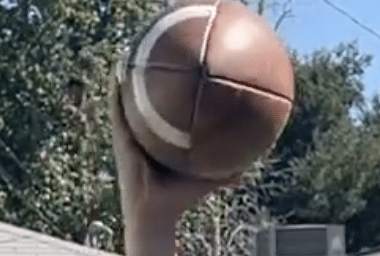
This means the ball is resting more on the part of the hand that is connecting the index finger and the thumb. There is no perfect football grip as everyone is going to have a different way that is comfortable for them to hold the ball. However, when you lift the ball up a good indication if you are going to throw a perfect spiral is how much of the palm is in contact with the football.
The Most Common Way To Grip The Football
In order to have an effective throwing motion, you want to have a good grip of the football. This means the ball is leaving your hand with the index finger being the last finger on the football. If any of the other four fingers are touching the ball at release, that means you are gripping the ball incorrectly.
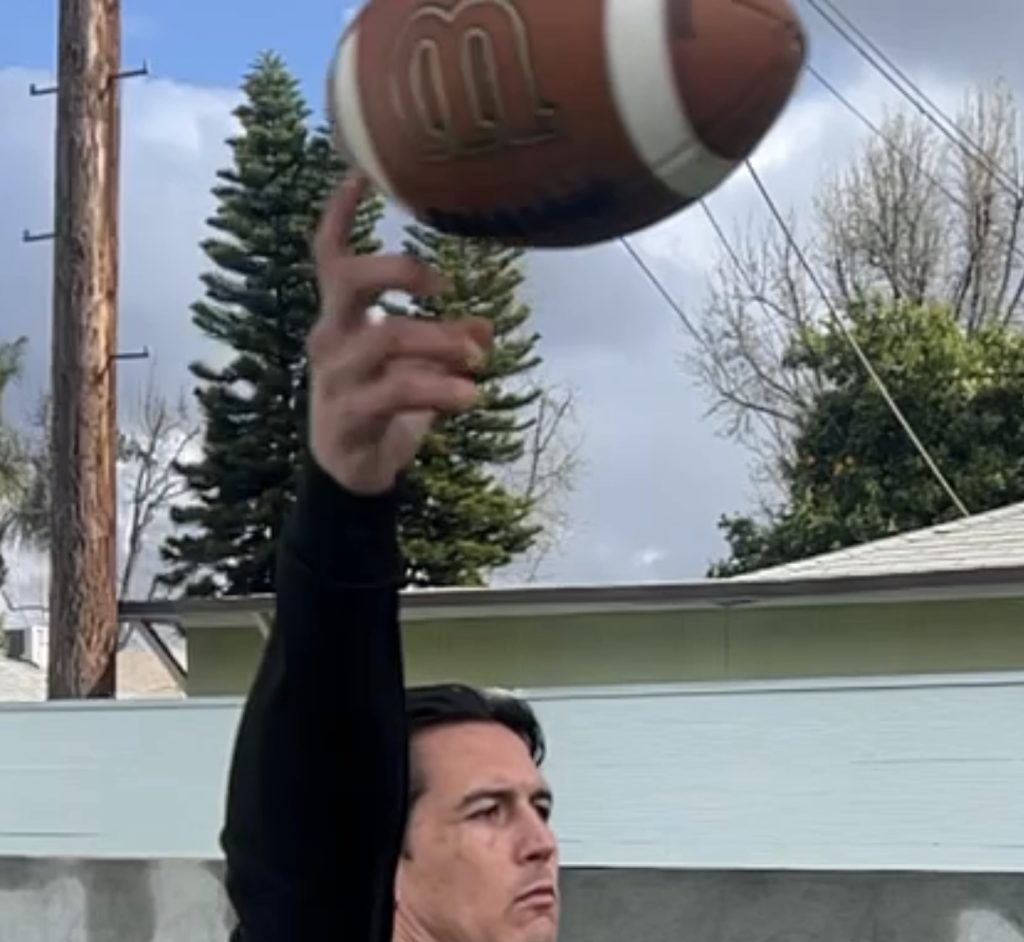
The most common way to grip the ball is with two fingers on the laces, ring finger and pinky finger. While the index finger is near the top of the ball and the middle finger is right above the top lace.
The index finger can be in a variety of different positions but I try to spread out the index finger and the pinky finger as much as possible to help with ball security and ensure the index finger is the last finger to touch the ball.
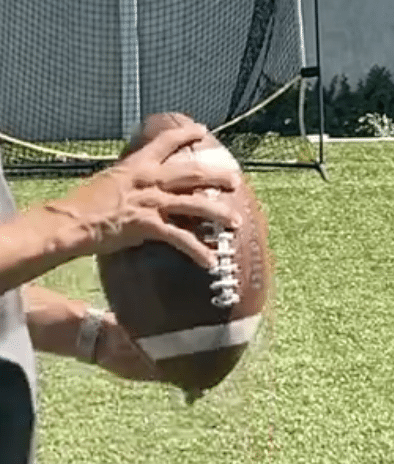
From there, counting from the top lace down, the ring finger would be in the second lace while the pinky finger is in the fourth or fifth lace. I do not think there is only one way to properly grip the ball as I have seen various grips be successful. However, this is a guideline to help you throw a football.
Lastly, the thumb is also going to be spread out as much as possible and towards the top one third of the football. The more space between the index finger and thumb, the better as it gives a more stable position for the football to sit on during the release.
Subtle Adjustments To Hold The Football
Three Fingers On The Football
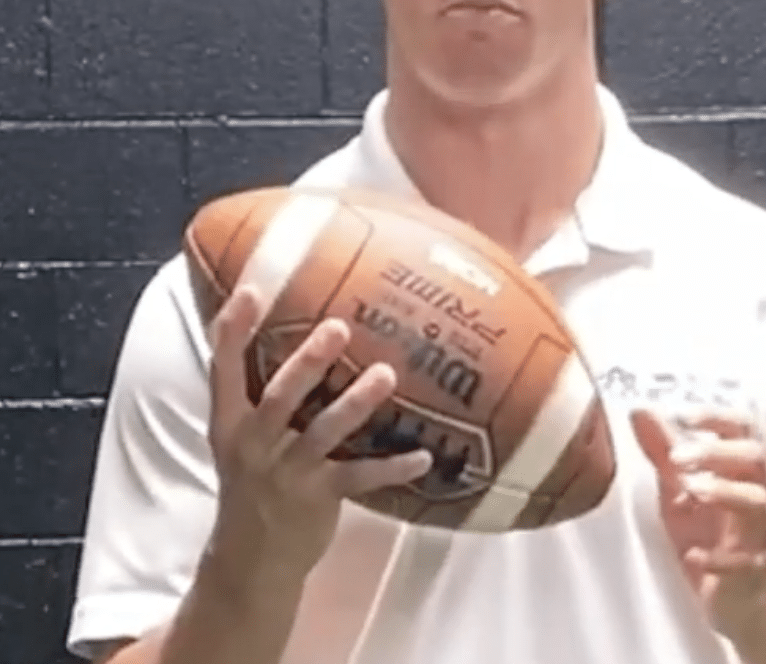
Obviously there are some subtle difference to grip the football that may work better for you. The most common would be to have 3 fingers on the football instead of only two. When I was younger I would have the middle finger in the first lace, the ring finger being in the third lace and the pinky finger being on the sixth lace.
This is most commonly used for young quarterbacks who are using a smaller ball or for people with really big hands. The reason being, is the bigger the football the harder it is to grip the football towards the middle of the ball. However, young quarterbacks using an age appropriate ball will be able to throw a football with their grip more towards the middle of the ball.
It actually may even be more beneficial for proper wrist position when throwing the ball with the best results to have three fingers on the laces when younger. This will help maintain a good grip of the ball while the throwing arm has a forward motion.
Index Finger Higher Up On The Ball
This has been something that has really helped me in being consistent in throwing a perfect spiral when throwing the ball. The most common difference people have when holding the football is the position of the index fingers. This is why there is no ‘proper grip’ but a great way to improve how to throw a football is to find the right position for your index finger to be to make sure it is the last part of the hand to leave the ball.
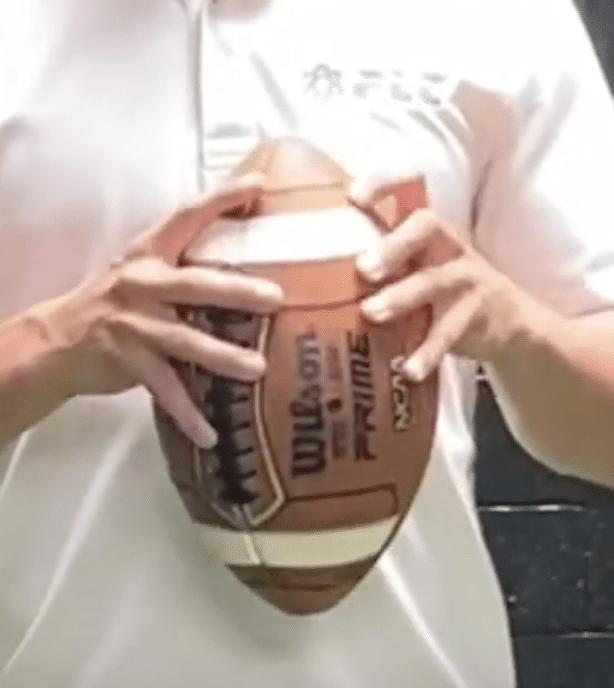
If the arm motion of the throwing arm feels pretty off when making this change then this in not the proper grip for you. The adjustment of the index finger should feel pretty comfortable right away if the adjust of how you hold the football is correct for you. If you do not get a perfect spiral within 2-3 throws then you should probably adjust the grip.
Move Finger Tips On The Lace
Another option that may help with properly grip of the football would be adjusting where the four fingers are on the laces. Often times if the throwing hand does not have a proper grip of the laces then the ball can slip out very easily. It may also be more difficult to get the wrist into the proper position when going through the arm motion. In this case, simply get more of the fingers over the laces so if the tips of the fingers are being used to hold the football, move the fingers of the throwing hand so the middle of the fingers are on the laces.
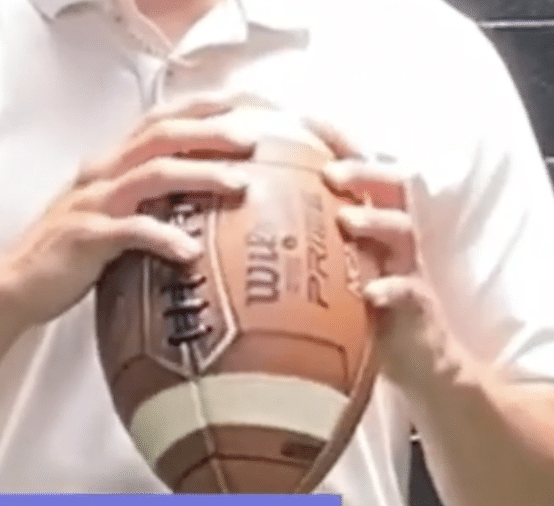
This grip should help maintain a better wrist position which will take some stress off the upper body and could increase arm strength. An important factor with this is maintaining control of the ball while throwing arm comes through. It is common if the ball is too big for the ball to slip while using this grip.
Adjust The Wrist
The wrist position is so important when you throw a football to get the right amount of velocity, power and accuracy. If the wrist is not in a good position of the throwing hand then the chances of you being able to throw the ball well go down tremendously.
Here are a couple changes you can make to properly grip the football to maintain good palm contact and make sure the ball t
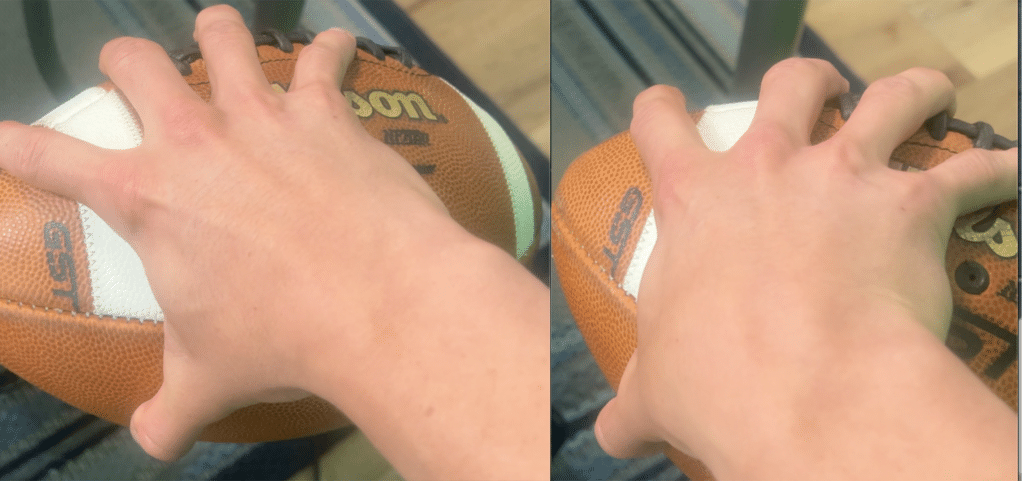
3. Choose the right football
Choosing the right football is an essential tip for young players, as well as professional quarterbacks, to maintain a good grip during games.
When selecting a football, young players should consider different types of grips they can use to secure their hold on the ball.
For example, athletes often use the ninety degree grip – which involves pointing your arm downward at a ninety degrees angle and wrapping two fingers around the foam laces of the ball.
This ensures that young players have control over how much spin is put on their throws or passes.
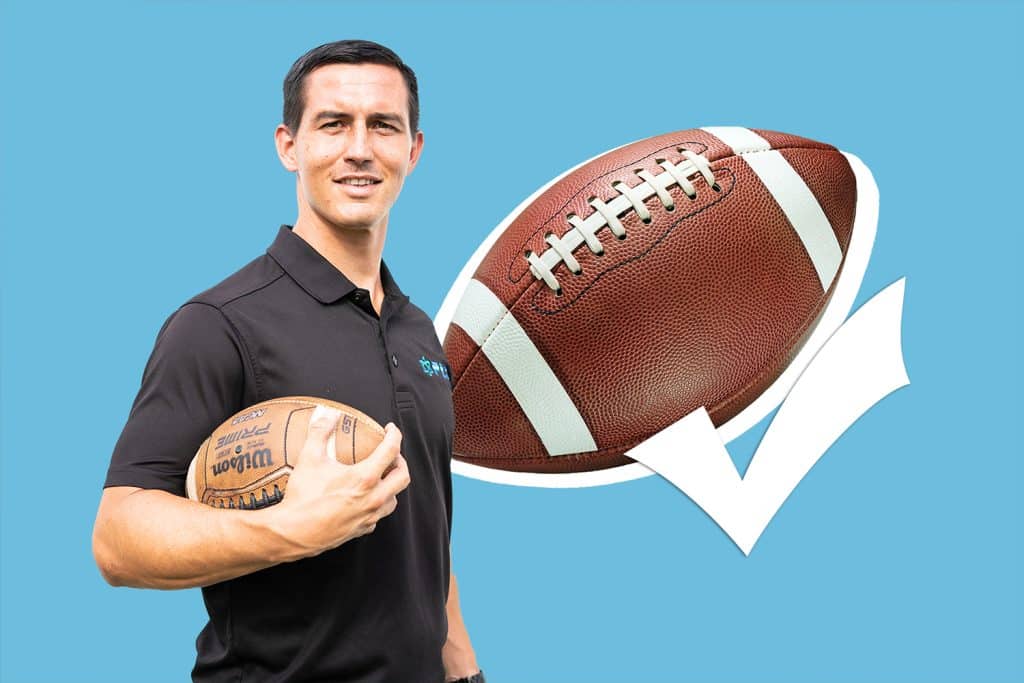
Professional quarterbacks often use gloves with extra padding designed specifically for gripping balls accurately and with force if needed.
By selecting the right football and implementing strong gripping techniques young players can ensure they have optimal control over the ball while they play.
When it comes to keeping a good grip, practicing catching is an invaluable tip that should not be overlooked by youth players looking to keep their football skills sharp!
Throwing With A ‘C’ Instead Of A ‘U’
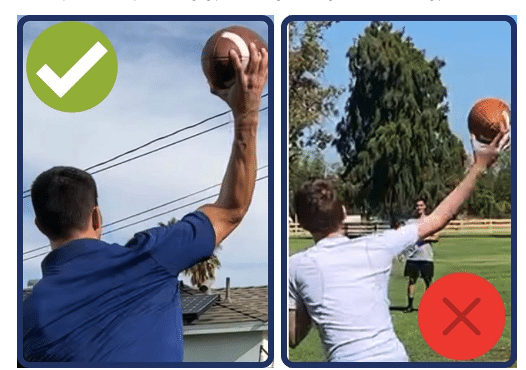
One of the top mistakes football players often make is not keeping their opposite side fingers close together when gripping the ball.
When your opposite side fingers are spread out when you throw the ball, it can cause it to spin off your hands which will result in an inaccurate pass.
This mistake is especially common amongst beginner level players who may be unaware of proper football techniques or possibly too young to understand what a proper grip should look like.
It is essential that players of all ages and experience levels keep their opposite side fingers glued together to maintain control over the ball while throwing and ensure accuracy when passing.
Furthermore, making sure the top lace is always gripped securely around the middle finger will give even more control over the trajectory and power of your throw – something that all experienced footballers should take note of!
Not following through with your throw
Throwing the football is a crucial part of the game, and proper form can be the difference between a successful play and an incomplete pass.
One mistake that some players make is failing to follow through on their throw.
It’s important to remember that when releasing the ball, your arm should continue along its forward motion all the way until it is pointing directly at your target.
This extra effort helps to consistency and accuracy of your passes.
When done correctly, following through on your throw will improve velocity, rotation, and accuracy while putting more loft on your passes.
By keeping the arm extended forward you can put more power behind your throws, no matter how far away they may be.
Neglecting this step could cost you precious yards toward the endzone, or even worse – an interception by a defender!
Making sure to fully extend and follow through with each throw will give you a better chance at having successful plays on game day.
Wrap Up
Holding a football grip might seem like a no-brainer – but there’s actually a lot that goes into it! By following the tips in this guide, you’ll be sure to have a good grip on the ball every time.
From how to hold the ball with your fingers to using laces for extra control, we’ve got you covered. So what are you waiting for? Get out there and start practicing your perfect football grip!


